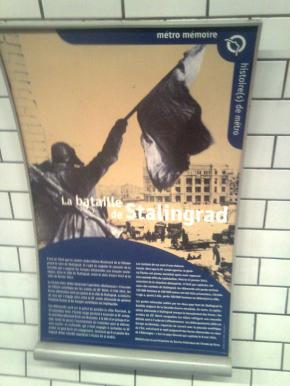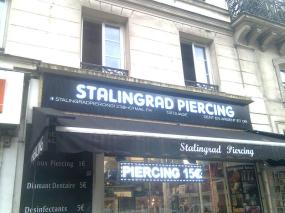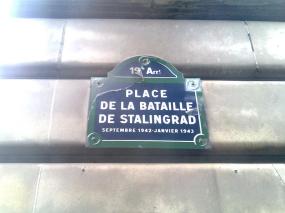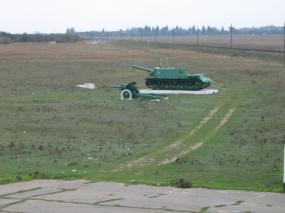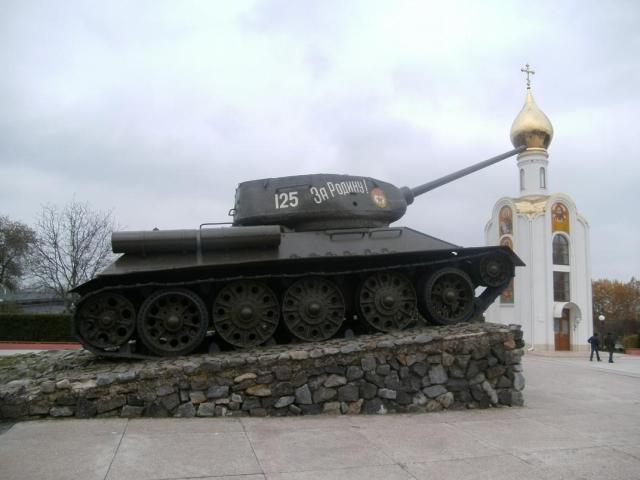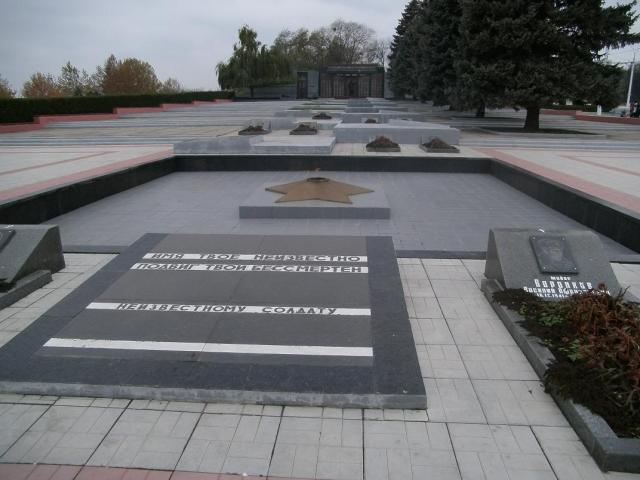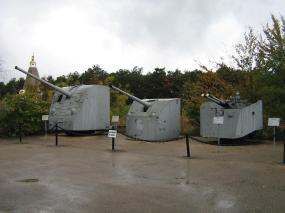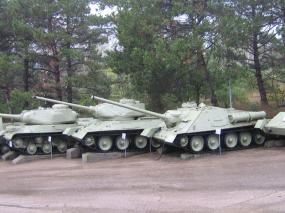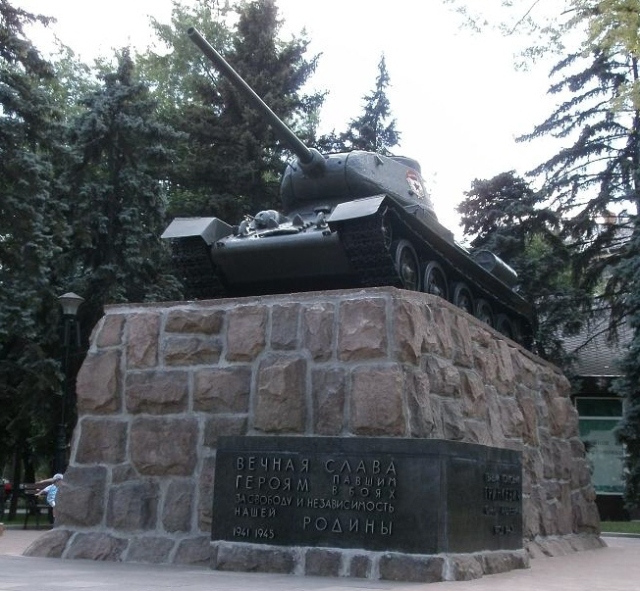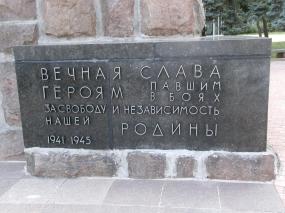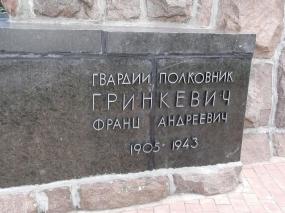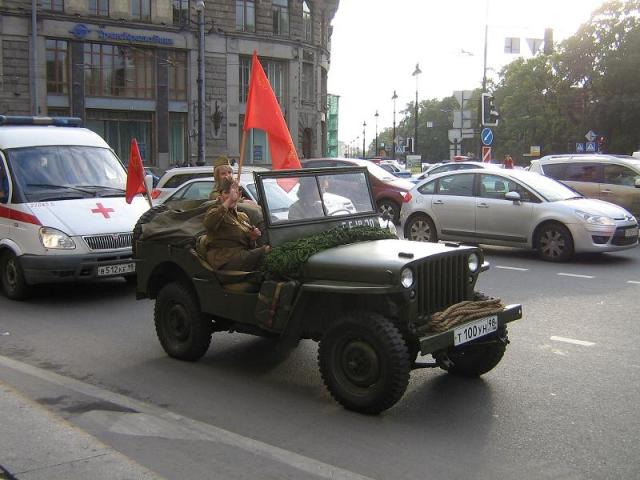The least accessible and least known of the three major Soviet memorials in Berlin can be found in the Pankow district, in the north of the cit y.
y.
The cemetery was designed by a team including the architects Konstantin A. Solovyev, M. Belarnzev and W.D. Korolyev and the sculptor Ivan G. Pershutchev and was constructed between 1947 and 1949. It covers and area of almost 30,000 m² (around 7 acres) and holds the remains of around 13,000 of the 80,000 Red Army soldiers who were killed in the fighting for Berlin in April and May 1945. On either side of the main entrance is an inscription, in German on one side and Russian on the other, which reads “Uncover your head. Here in eternal sleep rest Soviet soldiers – heroes of the Great Patriotic War 1941-1945. They gave their lives for your happiness.”
The paths through the main area of the cemetery are flanked on either side by 8 sarcophagi, holding a total of 1,182 bodies, and a further 2,647 bodies are buried in graves along the outer walls. A 33-metre obelisk stands at the far end of the cemetery, with a fairly typical representation of the motherland mourning her lost sons at its base. A number of officers and highly decorated soldiers are buried in base of the obelisk.
The entire complex underwent extensive renovations between 2011 and 2013. To get to the cemetery, take the S1 to Wilhelmsruh station. At the bottom of the stairs down from the platform, take the exit on the left onto Kopenhagener Straße. After about 300 m, turn right onto Niederstraße. At the end of this short residential street, there is a playing field. Walk around it on the right-hand side and you’ll soon see the wall of the cemetery on your left. The main entrance is at the far end.
Also in and around Berlin:









